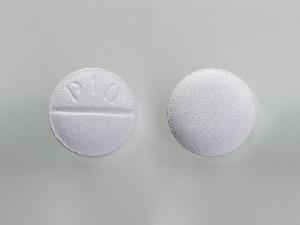Escitalopram Dosage
Medically reviewed by Drugs.com. Last updated on Oct 29, 2024.
Applies to the following strengths: 5 mg; 10 mg; 20 mg; 5 mg/5 mL
Usual Adult Dose for:
Usual Geriatric Dose for:
Usual Pediatric Dose for:
Additional dosage information:
Usual Adult Dose for Generalized Anxiety Disorder
Initial dose: 10 mg orally once a day; increase if necessary after at least 1 week of treatment to 20 mg once a day
Maintenance dose: 10 to 20 mg orally once a day
Maximum dose: 20 mg orally once a day
Comment: Treatment should be periodically reassessed to determine the need for ongoing treatment; efficacy beyond 8 weeks has not been systematically studied.
Use: Acute treatment of generalized anxiety disorder
Usual Adult Dose for Depression
Initial dose: 10 mg orally once a day; increase if necessary after at least 1 week of treatment to 20 mg once a day
Maintenance dose: 10 to 20 mg orally once a day
Maximum dose: 20 mg orally once a day
Comments:
- Acute episodes may require several months or longer of sustained pharmacological therapy beyond response to the acute episode.
- Patients should be periodically reassessed to determine the need for maintenance treatment.
Use: Acute and maintenance treatment of major depressive disorder
Usual Geriatric Dose for Depression
Recommended dose: 10 mg orally once a day
Use: Acute and maintenance treatment of major depressive disorder
Usual Pediatric Dose for Depression
12 years and older:
- Initial dose: 10 mg orally once a day; increase if necessary after at least 3 weeks of treatment to 20 mg once a day
- Maintenance dose: 10 to 20 mg orally once a day
- Maximum dose: 20 mg orally once a day
Comments:
- Acute episodes may require several months or longer of sustained pharmacological therapy beyond response to the acute episode.
- Patients should be periodically reassessed to determine the need for maintenance treatment.
Use: Acute and maintenance treatment of major depressive disorder
Renal Dose Adjustments
Mild to moderate renal dysfunction: No adjustment recommended
Severe renal dysfunction: Use with caution
Liver Dose Adjustments
Liver dysfunction: 10 mg orally once a day
Dose Adjustments
Treatment withdrawal: A gradual dose reduction is recommended instead of abrupt cessation where possible
Switching between MAOI and this drug: At least 14 days should elapse between ceasing one of these medicines and starting the other.
Precautions
US BOXED WARNINGS:
- Antidepressants increased the risk compared to placebo of suicidal thinking and behavior (suicidality) in children, adolescents, and young adults in short-term studies of major depressive disorder (MDD) and other psychiatric disorders. Anyone considering the use of this drug or any other antidepressant in a child, adolescent, or young adult must balance this risk with the clinical need.
- Short-term studies did not show an increase in the risk of suicidality with antidepressants compared to placebo in adults beyond age 24; there was a reduction in risk with antidepressants compared to placebo in adults aged 65 and older.
- Depression and certain other psychiatric disorders are themselves associated with increases in the risk of suicide.
- Patients of all ages who are started on antidepressant therapy should be monitored appropriately and observed closely for clinical worsening, suicidality, or unusual changes in behavior. Families and caregivers should be advised of the need for close observation and communication with the prescriber.
- This drug is not approved for use in pediatric patients less than 12 years of age.
Safety and efficacy have not been established in patients with major depressive disorder younger than 12 years, and in patients with generalized anxiety disorder younger than 18 years.
Consult WARNINGS section for additional precautions.
Dialysis
Data not available
Other Comments
Administration advice:
- Doses may be administered in the morning or evening, without regard to food.
- 10 and 20 mg oral tablets are scored and can be divided into equal doses.
General:
- Dosage should be adjusted based upon individual patient response.
- Use for extended periods of time should be periodically re-evaluated for long-term usefulness in each individual patient.
- This drug is indicated as an integral part of a total treatment program that may include other measures.
- The tablets and oral solution are considered bioequivalent.
Monitoring:
- Hepatic: Hepatic function
- Metabolic: Hyponatremia
- Nervous system: Serotonin syndrome
- Psychiatric: Emergence or worsening of depression, suicidal thoughts or behavior, and/or any unusual changes in mood or behavior
- Renal: Renal function
Patient advice:
- This medicine may increase the risk of suicidal thoughts and behavior. Be alert for the emergence or worsening of symptoms of depression, any unusual changes in mood or behavior, or the emergence of suicidal thoughts, behavior, or thoughts about self-harm. Report any behavior of concern to your healthcare provider as soon as possible.
- Tell your healthcare provider about all of the medicines that you take, including prescription and non-prescription medicines.
- This medicine may impair judgment, thinking, or motor skills; do not drive a car or operate dangerous machinery until you know how this drug affects you.
Frequently asked questions
- Why does Lexapro cause weight gain? Complete Patient Guide
- SSRIs vs SNRIs - What's the difference between them?
- When is the best time to take Lexapro? Morning vs Night Dosing
- How long does it take for Lexapro to work?
- Does Lexapro cause night sweats?
- What is the difference between Celexa and Lexapro?
- On Nexito plus for 3 months, stopped 2 days ago, can't sleep. Why?
- What are some common side effects of antidepressants?
More about escitalopram
- Check interactions
- Compare alternatives
- Pricing & coupons
- Reviews (4,003)
- Drug images
- Side effects
- Patient tips
- During pregnancy
- Support group
- Drug class: selective serotonin reuptake inhibitors
- Breastfeeding
- En español
Patient resources
Other brands
Professional resources
Other brands
Related treatment guides
See also:
Further information
Always consult your healthcare provider to ensure the information displayed on this page applies to your personal circumstances.


